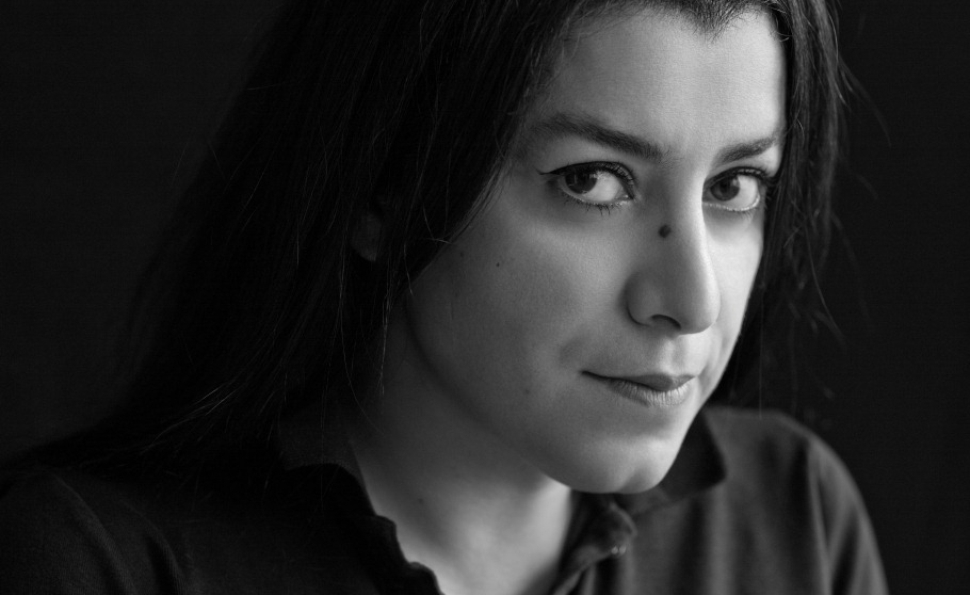There is perhaps no more auspicious a literary debut in recent memory than Zadie Smith's White Teeth (2000), and that achievement is made even more astounding when you consider that she finished the novel alongside her undergraduate education.
A sprawling saga tracing the lives of three families in London from WWII up to the early 90s, White Teeth is emblematic of both Smith's own family tree (like Irie, her father is British and her mother is Jamaican) and the contentious nature of immigration in England, where chicken tikka masala is hailed as the national dish, yet skinheads blame the nation's woes on foreigners. Britain's colonial history is central to this narrative, with key figures hailing from Jamaica (Clara and Hortense) and Bangladesh (Samal and Alsana), and there's an equally foundational emphasis on religion with Jewish, Muslim, and Jehovah's Witness beliefs being espoused by various characters.
One last bit of context here, which is perhaps the hardest one for you to adapt your minds to: the contemporary setting of the novel is practically a prelapsarian state compared to now. It's very much shaped by the era of Cool Britannia and premillennial optimism — a time of intense national pride and at the same time, an embracing of multiculturalism. That doesn't mean that there aren't struggles, but compared to post-9/11 international politics, everything feels dewy and innocent. It's difficult for me to fully remember the spirit of those times and I regret that it doesn't feel like we'll return to that state of grace anytime soon.
All of this complexity takes quite a bit of space to unfold — as Michiko Kakutani observes in her New York Times review, White Teeth "is not one of your typical small, semiautobiographical first novels. It's a big, splashy, populous production reminiscent of books by Dickens and Salman Rushdie ... a novel that's not afraid to tackle large, unwieldy themes" — and that's precisely why we've been rationing classes on shorter texts to leave space for a something of this grand scale. This book will carry us very close to the end of the semester, but it's well worth the time and effort that will take. Here's how our classes with White Teeth will break down:
A sprawling saga tracing the lives of three families in London from WWII up to the early 90s, White Teeth is emblematic of both Smith's own family tree (like Irie, her father is British and her mother is Jamaican) and the contentious nature of immigration in England, where chicken tikka masala is hailed as the national dish, yet skinheads blame the nation's woes on foreigners. Britain's colonial history is central to this narrative, with key figures hailing from Jamaica (Clara and Hortense) and Bangladesh (Samal and Alsana), and there's an equally foundational emphasis on religion with Jewish, Muslim, and Jehovah's Witness beliefs being espoused by various characters.
One last bit of context here, which is perhaps the hardest one for you to adapt your minds to: the contemporary setting of the novel is practically a prelapsarian state compared to now. It's very much shaped by the era of Cool Britannia and premillennial optimism — a time of intense national pride and at the same time, an embracing of multiculturalism. That doesn't mean that there aren't struggles, but compared to post-9/11 international politics, everything feels dewy and innocent. It's difficult for me to fully remember the spirit of those times and I regret that it doesn't feel like we'll return to that state of grace anytime soon.
All of this complexity takes quite a bit of space to unfold — as Michiko Kakutani observes in her New York Times review, White Teeth "is not one of your typical small, semiautobiographical first novels. It's a big, splashy, populous production reminiscent of books by Dickens and Salman Rushdie ... a novel that's not afraid to tackle large, unwieldy themes" — and that's precisely why we've been rationing classes on shorter texts to leave space for a something of this grand scale. This book will carry us very close to the end of the semester, but it's well worth the time and effort that will take. Here's how our classes with White Teeth will break down:
- Mon. November 6: chapters 1–4
- Wed. November 8: chapters 5–6
- Fri. November 10: NO CLASS — Veterans Day (observed)
- Mon. November 13: chapters 7–10
- Wed. November 15: chapters 11–12
- Fri. November 17: chapters 13–15
- Mon. November 20: chapters 16–18
- Wed. November 22: chapters 19–20
Here's our final set of supplemental readings:
- The New York Times published two reviews of White Teeth by Anthony Quinn [link] and Michiko Kakutani [link]
- Sarah Lyall also interviewed Smith for The Times around the time of the book's release: [link]
- Smith won The Guardian's First Book Award in 2000. Here is Stephen Moss' review: [link]
- Simon Hattenstone interviewed Smith for The Guardian in conjunction with her First Book Award win: [link]
- Daniel Soar reviews the novel for The London Review of Books: [link]
- John Lanchester reviews the book for The New York Review of Books: [link]
- "Zadie Smith says using social media would threaten her writing," a recent article from The Guardian: [link]





